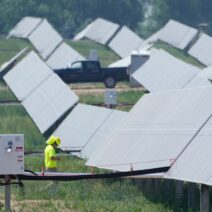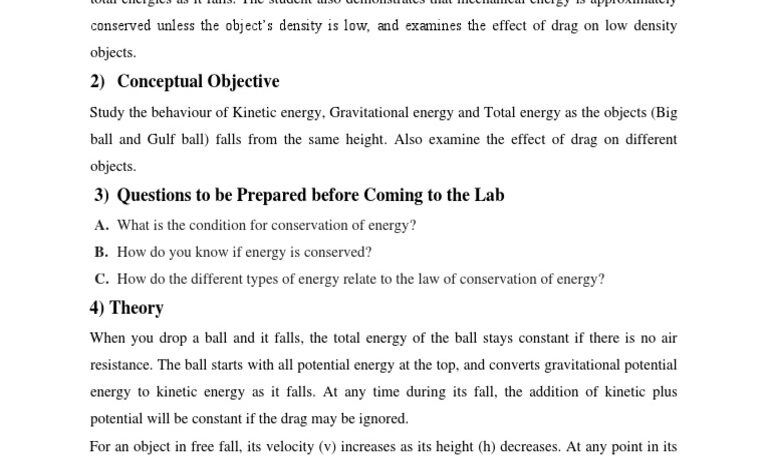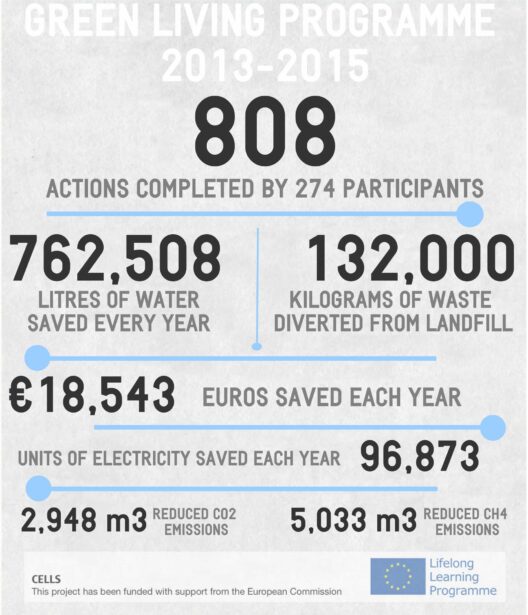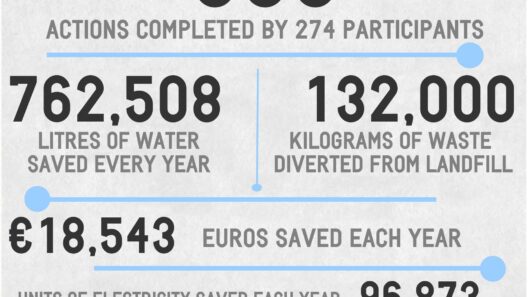Energy conservation is a fundamental principle within the realm of physics, capturing not just the imagination but also the critical aspects of mechanical systems. One common ocular observation that embodies the principles of energy conservation is that of a falling object. When we toss an object into the air or drop it from height, a noteworthy transformation of energy takes place, sparking curiosity about the underlying physics. The integral relationship between gravitational potential energy and kinetic energy is central to understanding how energy is conserved in a falling object.
To begin with, one must familiarize themselves with the types of energy involved in this phenomenon. Gravitational potential energy (GPE) is the energy stored in an object as it gains height against the gravitational force. It can be expressed mathematically as:
GPE = mgh
In this equation, m represents the mass of the object in kilograms, g is the acceleration due to gravity (approximately 9.81 m/s² on Earth), and h denotes the height above a reference point. As an object ascends, it accumulates potential energy proportionate to its height. However, once released, this potential energy undergoes a transformation.
Upon free fall, the object accelerates towards the Earth, and its gravitational potential energy converts to kinetic energy (KE), which can be described by the equation:
KE = 1/2 mv²
In this expression, v is the velocity of the object upon falling. As the object descends, its height diminishes, and correspondingly, its potential energy reduces. As driven by the laws of conservation of energy, the lost gravitational potential energy corresponds to an equivalent gain in kinetic energy. This exchange showcases a beautiful symmetry within physical laws; energy, though altered in form, remains constant in total quantity throughout the event. Thus, at the moment of release, the potential energy is maximized, while kinetic energy remains at zero. Just prior to impact, the potential energy is minimized to a baseline level (zero at ground level), while kinetic energy reaches its peak, embodying the elegant dance of energy transformation.
Another fascinating aspect of this phenomenon is the role of air resistance or drag, which has profound implications for objects falling through air. Although energy is conserved in an ideal system with no external forces, real-world applications introduce frictional forces—air resistance becomes a significant variable. As a falling object gains speed, it encounters increasing resistance that dissipates energy, converting it into thermal energy. When accounting for dissipation, the calculation of total mechanical energy becomes more intricate. Energy is not lost but rather transformed into forms that may not be entirely visible, like the warmth generated as air molecules collide with the surface of the object.
Understanding the nuances of falling objects also leads to considerations of terminal velocity. This phenomenon occurs when the force of gravitational pull is balanced by the drag force exerted by the medium through which the object is falling. At this point, the object ceases to accelerate, and its velocity remains constant. The beauty of terminal velocity lies in its essence; it illustrates energy conservation even as it introduces a dynamic equilibrium. The energy transformations still operate beneath the surface, revealing how energy shifts through kinetic forms until a balance is struck.
Moreover, the practical implications of these principles resonate on a larger scale. Engineers and architects consider energy conservation in designing structures and safety systems. For example, the construction of high-rises necessitates an understanding of how falling objects respond to gravity and airflow, thereby aiding in designing safe evacuation protocols and protective features. Furthermore, outdoor activity enthusiasts can benefit from this knowledge; knowing how energy transforms aids in making safe choices while engaging in extreme sports such as paragliding or base jumping.
Furthermore, the applications of this principle extend beyond physical observation, embedding themselves within ecological contexts. The understanding of energy conservation transcends mere mechanical systems and interlaces itself into the ecosystems we inhabit. The conservation of energy principles manifests in the relationships between organisms within food chains, where energy ultimately transfers through various forms, from plants to herbivores to carnivores. The cycling of energy through these various systems is analogous to the way gravitational potential energy transforms into kinetic energy in free-fall scenarios.
In essence, the interplay of energy transformations within a falling object serves as a microcosm of more extensive environmental phenomena. Humanity’s quest to conserve energy across various media contributes to sustainable practices and technologies. By drawing insights from the behavior of falling bodies, we can further explore the realms of renewable energy and environmental stewardship, striving for equilibrium within our ecosystems while acknowledging that energy, in all its forms, interconnects every aspect of our lives.
In conclusion, the notion of energy being conserved in a falling object captures both scientific principles and broader existential reflections. The transition from gravitational potential to kinetic energy serves as an illustrative metaphor, underscoring the omnipresence of energy in our universe. This foundational concept not only enhances our understanding of physical laws but also motivates our collective responsibility toward a sustainable future. Such knowledge, when wielded wisely, can profoundly shape both the scientific inquiry and environmental policies we choose to pursue.








